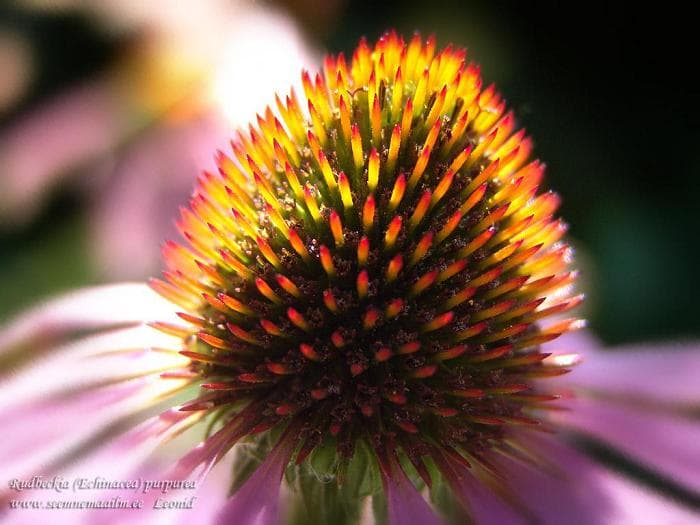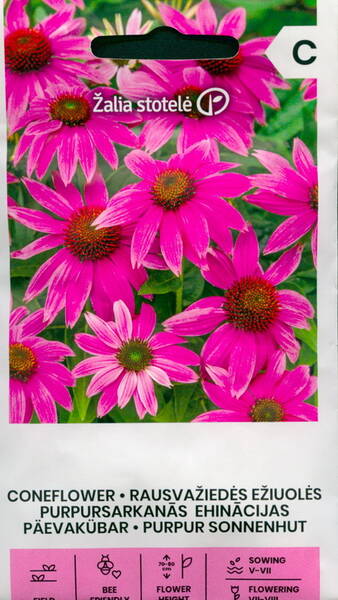Height 90-100 cm. Unpretentious frost-resistant perennial. Growing up, forms curtains up to half a meter in diameter.
Inflorescences are large, up to 12 cm, semi-double, saturated color, with a dark convex center. Looks good in groups against the background of the lawn, used for cutting. Blooms until frost.
1,0 g = 150-200 seeds.

Eng.: Eastern purple coneflower (Sampson root), black sampson, comb-flower, echinacea, red sunflower. Suom.: Punahattu, auringonhattu. Sven.: Röd rudbeckia, röd solhatt. Bot. syn.: Brauneria purpurea (L.) Britt., Echinacea purpurea .
* Echinacea purpurea is still a rare plant. The name "echinacea" comes from the Greek word "echinos" - "hedgehog" after the prickly needle-shaped leaves of the wrapper. This is a perennial plant up to 60 cm or more in height. Stems simple and erect. First, a rosette of leaves with reddish petioles is formed and then several straight, stiff stems appear. Inflorescences are large (up to 10 cm in diameter) baskets. The combination of purple-pink reed flowers, directed downwards and located on a convex receptacle of purple-brown flowers, gives echinacea an unusual, sophistication.
This plant is an excellent honey plant. In one place grows for 5-6 years. It blooms until frosts. From flowers, you can make winter bouquets.
And, most importantly, Echinacea purpurea is a very useful medicinal plant. For treatment, not only roots are used but also stems leaves and flowers. It improves immunity, heals wounds and is an anti-inflammatory agent - it is a natural antibiotic.
Propagated by seeds and division of the bush. The seeds are tetrahedral, with a tuft in the form of a jagged margin, which is harvested as they ripen. In early spring, at the end of March, the seeds are planted scattered in a box with soil to a depth of 0.5-1 cm, sprinkled with a very thin layer of washed sand on top, carefully moisten the earth with water from a watering can or sprayer.
Care comes down to ensuring that the small shoots on the windowsill do not burn the sun (we cover them with something when necessary), and to maintaining moderate moisture. Echinacea does not like waterlogging, but it does not tolerate drought well. In early May, plants are planted in open ground in a sunny place. Further care comes down to loosening and moderate watering. Echinacea loves spraying with water on the hot summer evening.
At the end of summer, fertilize once with mullein infusion (1:10).
To make the bush beautiful, do not forget to cut dried flowers. Echinacea is easy to care for because it is disease resistant.
Therefore, echinacea is a gift of nature, there is a lot in it: healing power, beauty, unpretentiousness, and durability.












